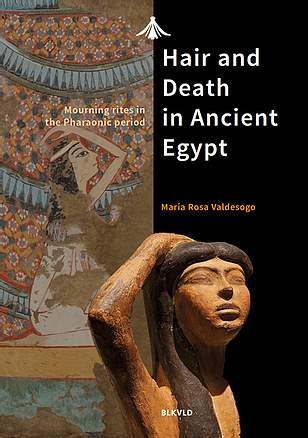I would like to focus on an exceptional coffin located in the National Museum of Scotland. Because it contains a depiction of Isis and Nephthys, that well deserves a mention.
1. Some Information about the Coffin of “Qurna Queen”.
Flinders Petrie discovered in 1908 the coffin of Qurna Queen in the Egyptian village of Qurna (Luxor). That same year he offered to the National Museum of Scotalnd and nowadays the piece is registered under the reference A.1909.527.
It belongs to Dynasty XVII (Second Intermediate Period) and the owner was a young woman of 18-25 years old and with an height of 1,50 m.
The rich funerary equipment, that accompanied the coffin indicates that probably she belonged to the royal family. However the lack of inscription prevents us from knowing her identity.
For deeper information about its discovery click on this image.
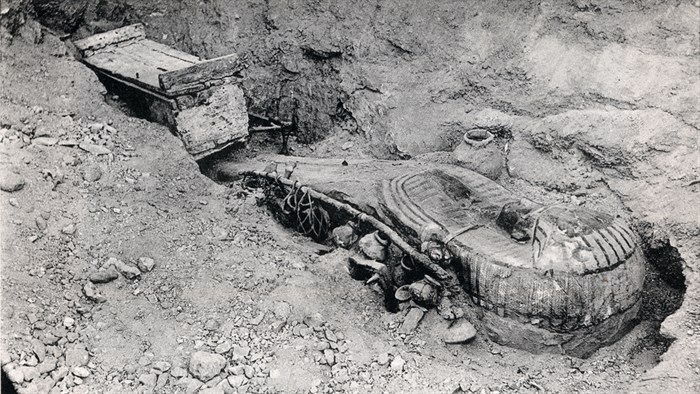
2. The Aesthetics of the coffin fo ªQurna Queen”.
We are facing a rishi-style coffin typical of the Second Intermediate Period. The usual features are :
- Antropoid shape.
- Feathered painted decoration.
The coffin of Qurna Queen is not an exception in this point. The lid is painted with feathers and has an image of a vulture in her chest (also quite usual in these coffins).

We cannot say too much about the decoration of the coffin of the “Qurna Queen”. The base and the lid do not present any kind of decoration, except for an image at the feet of the outer side of the lid.
3. Isis and Nephthys at the feet of “Qurna Queen”.
The feet of the lid is decorated with the images of two kneeling women, facing each other and with raising arms.
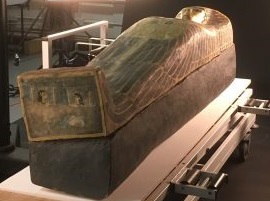
Ther is no inscription indentifying them, but it seems quite sure that they are Isis and Nephthys, the two professional moourners of the dead.
As we already know, Isis nd Nephthys were crucial for the dead’s resurrection. Wherefore during the funerary ceremony the two professional mourners in the role of Isis and Nephthys performed a mourning rite to give back the vital functions to the mummy. This practice was essential for the deceased to reach the Hereafter in optimal physical conditions.
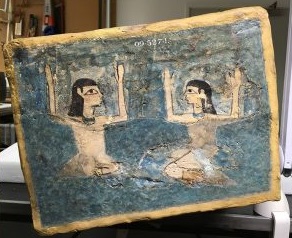
For this reason the presence of Isis and Nephthys in the coffins was a “must”.
Isis and Nephthys in Coffins of Previous Dynasties.
In the Dynasty XI there were coffins with the names of Isis and Nephthys inscribed at both ends. In the same way the coffins of Dynasty XII, although they were more elaborated, present the names of Isis and Nephthys as a part of the global composition. And From Dynasty XIII we find already coffins with depictions (not just the name) of the two professional mourners Isis and Nephthys at the head and feet of the piece.
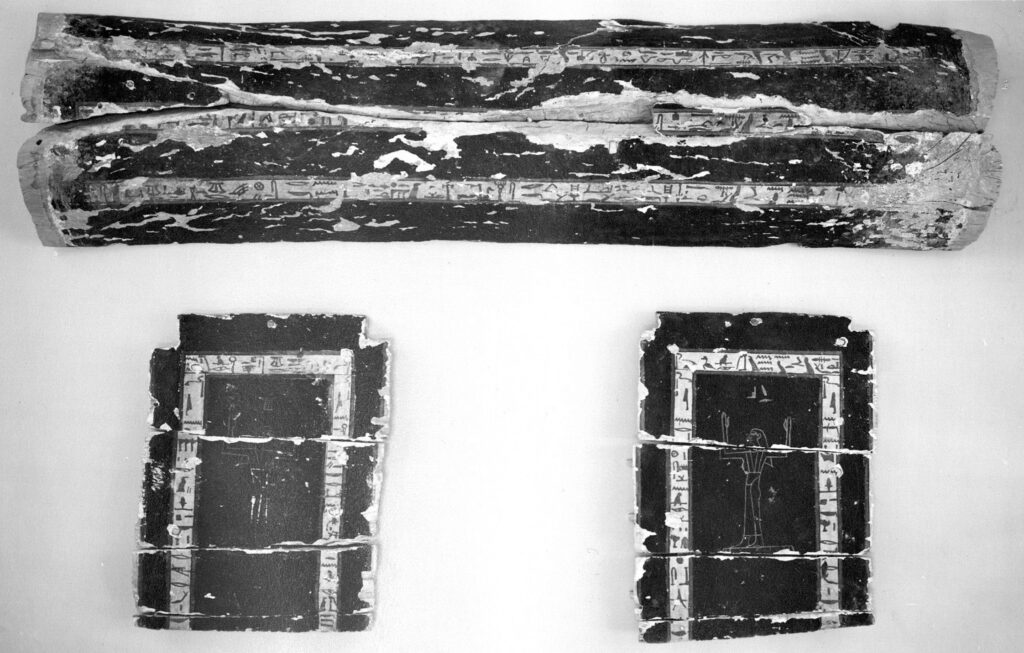
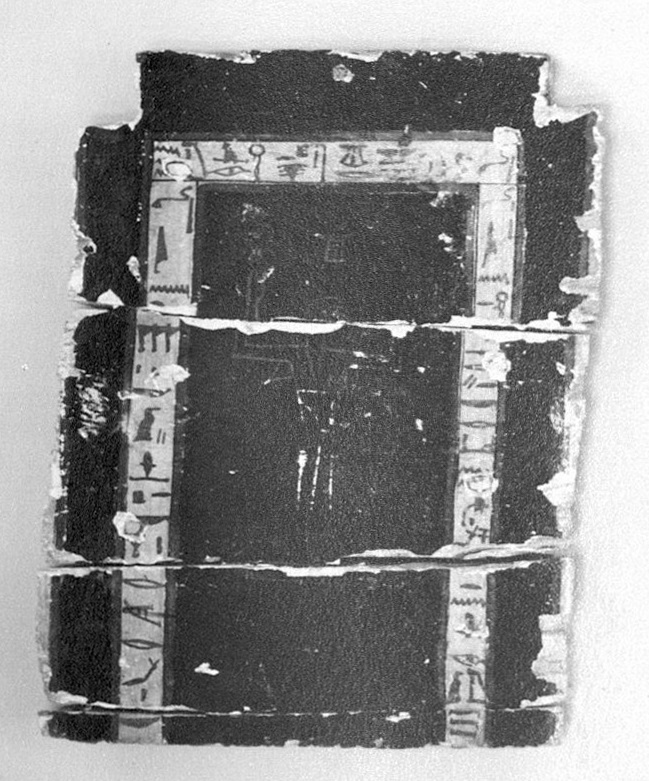
Coffin of Entemaemsaf. Detail of Nephthys . Dynasty XIII. El-Asasif. Photo: Metropolitan Museum of Art of New York. 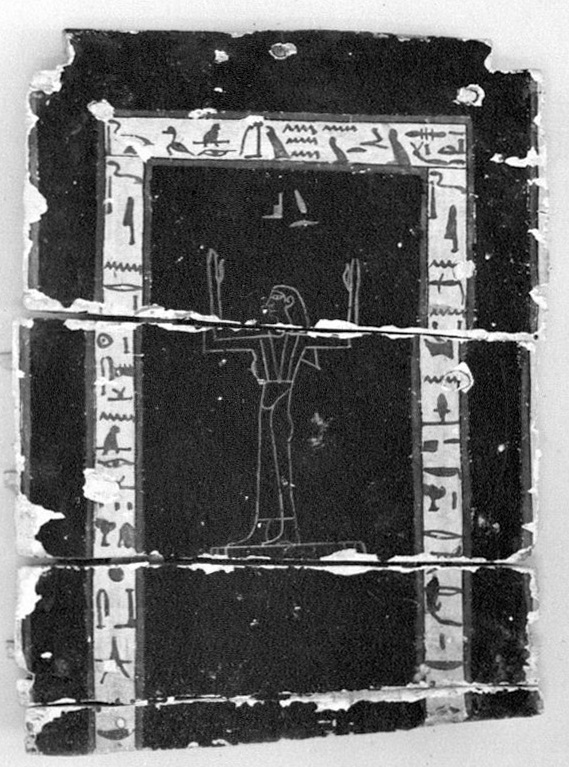
Coffin of Entemaemsaf. Detail of Isis. Dynasty XIII. El-Asasif. Photo: Metropolitan Museum of Art of New York.
Later in the Dynasty XVII appeared the rishi coffins. They had an image of Isis and Nephthys together at the feet of the lid of the mummy. Why? becasue probably this area of the coffin belonged to the divine sphere and it was where these two goddesses should be located.

Reflection.
So, the “Qurna Queen” followed the rule. But what attracts attention is a coffin with no other image except Isis and Nephthys.
The reflection is: She was apparently a member of the royal family. So the coffin could have been much more sofisticated and with more decoration.
However, for whatever reason, they chosed a single image: Isis and Nephthys. Why these two goddesses? Because they were indispensable, much more than any other deity.

Their presence guaranteed the performance of the mourning rite and that assured the resurrection and eternity to “Qurna Queen”.
For knowing more about the mourning rite in Ancient Egypt you can click on the book:
